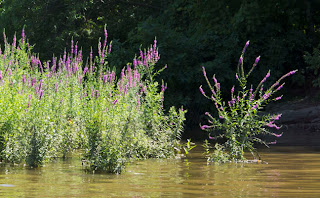What a triumph! Yes, the music was magnificent, but there was much more to Saturday’s concert, aptly titled Water, at the Marcus Center. More even than the diverse outdoor performances and festive activities that literally surrounded the concert outside the hall. The real triumph was the Milwaukee River and the crowds who gathered there to experience the multimedia extravaganza orchestrated by Present Music.
When I moved to Milwaukee in 1976, the then Performing Arts Center (PAC) was still new. I didn’t realize at the time how bold a move it was for Milwaukee to build its premier performing arts showcase on the riverfront. Unlike today, there was no riverwalk then and even the businesses that lined it didn’t face towards the river.
Although a newcomer to the city, it didn’t take me long to discover that the sorry state of the river itself was the main reason. But it wasn’t just the polluted river. Downtown Milwaukee suffered the malaise of many rustbelt cities in the 1970’s. No one lived there and after five o’clock it emptied. The streets were deserted by six.
The riverside plaza behind the PAC that led down to the water likewise languished, underutilized.
Flash forward to today.
While no one will claim that Milwaukee has overcome all its problems, its downtown, and especially its namesake river, couldn’t be more different than it was 35 years ago. On Saturday evening thousands of people packed the riverfront plaza and lined the two flanking bridges. Boats of all sizes paraded past, idled to watch. The musicians floated up to the concert hall on the water.
This event made the Marcus Center, at its prescient location, the epicenter of a revitalization that has water as one of its defining features. The theme of the evening was no coincidence and its success was far more than symbolic. It represents a still nascent but real transformation in the hearts and minds of Milwaukeeans.
Moreover, the event brought together two constituencies that haven’t always found common purpose. It warmed my heart to see this event sponsored by both the United Performing Arts Fund and Milwaukee Riverkeeper, by the Wisconsin Arts Board and the Urban Ecology Center. For once I don’t have to choose between my two blogs to post this story, for it is appropriate to both.
The performances by Present Music and its partners, including Danceworks, several choirs, and video artists, were remarkable and moving. The music evoked the various rhythms and sounds of water in its many forms. In a piece commissioned especially for this concert, water itself was one of the “instruments.” The musician seated before a clear plastic tub with his sleeves rolled up looked incongruous, even humorous – until he began to “play” the water with reverent solemnity. The gentle, natural sounds he made harmonized beautifully, fittingly, with the voices and instruments of the ensemble.
Poet and naturalist Gary Snyder has said, “Art is not real unless some wild is let in.” Kudos to artistic director Kevin Stalheim and composer Kamran Ince for taking his metaphor to a new level.
The highlight of the evening, for me, was the concluding piece, a medley of songs “concocted” by Stalheim. Small groups of choristers stood around the periphery of Uihlein Hall, adding their voices to those on stage. Familiar tunes – How Dry I Am, The Water Is Wide, Down by the Riverside, Row, Row, Row Your Boat – joined with Handel’s Water Music (of course!) The melodies tumbled and washed over the audience like water.
A crescendo was followed by a hush. Then, out of the pregnant silence, a child’s voice sang out the single line: “Shall we gather at the river?” In a brilliant move, the thrilling climax erupted from the audience itself as the hall filled with two thousand voices proclaiming in song, “YES, WE’LL GATHER AT THE RIVER….”
And we did.
For more detailed reviews of the concert, read those by Tom Strini in Third Coast Digest and Jim Higgins at JSOnline.
The images that accompany this post are my own tribute to this important event.
The images that accompany this post are my own tribute to this important event.










































